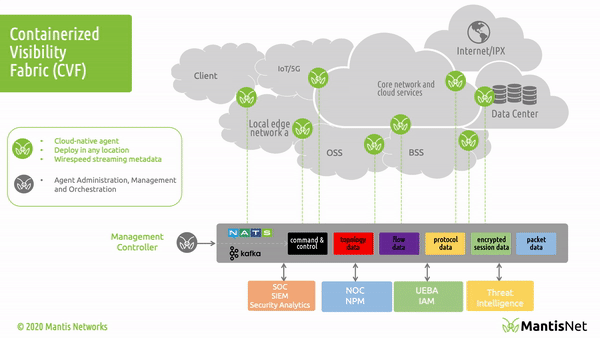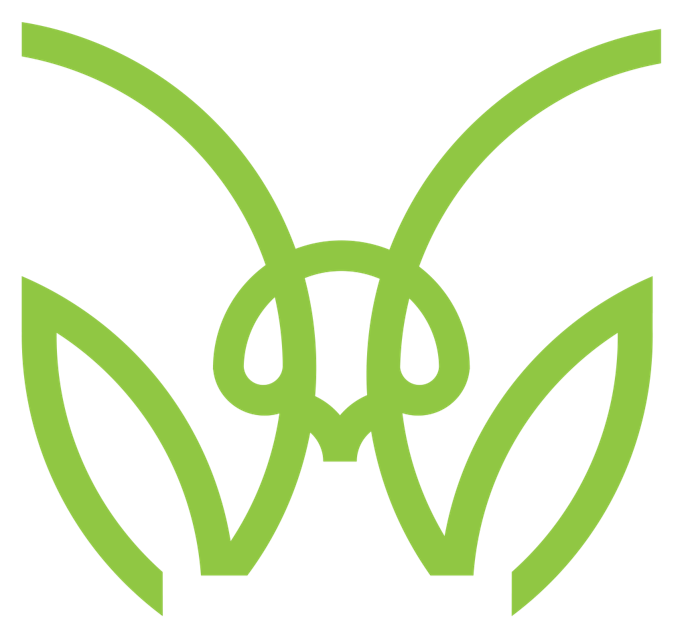Watch the Containerized Visibility Fabric Overview
How the Containerized Visibility Fabric works
The CVF application is a lightweight piece of code that communicates safely with the bare-metal operating system, deployed as a container in cloud-native environments. The CVF application is managed either as a Daemonset or Replicaset within the Kubernetes / cloud environment to ensure scalability, consistency, and maintainability.
The power of CVF lies in the fact that it allows for deep observability and control: from individual machines (bare-metal OS) to across an entire cloud infrastructure; core-to-edge. Furthermore, the CVF architecture is flexible, extensible, and open: CVF compute engines can be updated on-the-fly, new functional capabilities can be added with plug-ins, and communications are provided via an open standards distributed messaging queue / publish-subscribe architecture.
The CVF is comprised of two main components, "agent(s)" and the "controller" that publish to a message queue:
 Agents are lightweight network sensors that can accomplish a variety of network visibility functions, these functions are referred to as "tasks". Agents also include native tapping capabilities for autodiscovery of all containers, infrastructure, and interfaces.
Agents are lightweight network sensors that can accomplish a variety of network visibility functions, these functions are referred to as "tasks". Agents also include native tapping capabilities for autodiscovery of all containers, infrastructure, and interfaces.
 The controller is a container that manages multiple agents within an environment- providing configuration and provisioning control, as well as instructing the agents what their current "directive" is. A directive is a combination of one or more tasks that are to be performed by the agent.
The controller is a container that manages multiple agents within an environment- providing configuration and provisioning control, as well as instructing the agents what their current "directive" is. A directive is a combination of one or more tasks that are to be performed by the agent.



